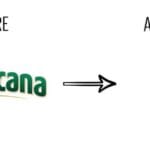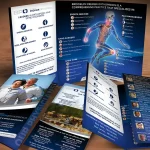In today’s digital age, having a well-designed website is crucial for businesses and individuals alike. A website serves as the online face of a brand or individual, and it is often the first point of contact for potential customers or clients. Therefore, it is essential to create a website that not only looks visually appealing but also provides a seamless user experience. This is where streamlined web design comes into play.
Streamlined web design refers to the practice of creating websites that are clean, minimalist, and easy to navigate. It focuses on simplicity and clarity, ensuring that users can easily find the information they are looking for without any distractions or confusion. A streamlined website not only enhances the user experience but also improves load times and overall performance.
Key Takeaways
- Streamlined web design is important for creating a positive user experience.
- Clean and minimalist web design can improve website functionality and user engagement.
- The psychology behind streamlined web design involves reducing cognitive load and increasing visual appeal.
- Typography plays a crucial role in creating a clean and minimalist web design.
- Color can impact user emotions and should be used intentionally in streamlined web design.
The Benefits of Clean and Minimalist Web Design
Clean and minimalist web design is characterized by its simplicity and lack of clutter. It focuses on using white space, simple typography, and minimal graphics to create a visually appealing and easy-to-navigate website. There are several benefits to adopting this design approach.
Firstly, clean and minimalist web design improves the user experience. By removing unnecessary elements and distractions, users can focus on the content they are interested in. This leads to increased engagement and higher conversion rates. Additionally, a clutter-free website is easier to navigate, allowing users to find what they are looking for quickly and efficiently.
Secondly, clean and minimalist web design improves load times. By reducing the number of elements on a webpage, such as images or scripts, the website can load faster. This is crucial in today’s fast-paced digital world where users have little patience for slow-loading websites. Faster load times not only improve the user experience but also contribute to better search engine rankings.
The Psychology Behind Streamlined Web Design
Streamlined web design is not just about aesthetics; it is also rooted in psychological principles that support effective communication and user engagement. One of the key psychological principles behind streamlined web design is the importance of simplicity. Humans are naturally drawn to simplicity and tend to prefer information that is presented in a clear and concise manner. By adopting a clean and minimalist design, websites can effectively communicate their message and engage users.
Another psychological principle that supports streamlined web design is the concept of clarity. Clear communication is essential for websites to convey their message effectively and ensure that users understand the information presented. Streamlined web design achieves clarity by removing unnecessary elements and focusing on the most important content.
The Role of Typography in Clean Web Design
Typography plays a crucial role in clean web design. It encompasses the choice of fonts, font sizes, and spacing used on a website. The right typography can enhance readability, create visual hierarchy, and contribute to the overall aesthetic appeal of a website.
When it comes to font choice, it is important to select fonts that are easy to read on different devices and screen sizes. Sans-serif fonts are often preferred for digital platforms as they are clean and legible. Additionally, using a limited number of fonts throughout the website helps maintain consistency and creates a cohesive design.
Font size is another important consideration in clean web design. Text that is too small can be difficult to read, especially on mobile devices. On the other hand, text that is too large can be overwhelming and disrupt the visual balance of a webpage. Finding the right balance is crucial for creating a visually appealing and user-friendly website.
Spacing, both between letters (tracking) and between lines (leading), also plays a significant role in clean web design. Ample spacing improves readability by allowing users to easily distinguish between letters and lines of text. It also contributes to the overall aesthetic appeal of a webpage by creating visual breathing room.
The Impact of Color in Streamlined Web Design
Color is an essential element in web design as it has a significant impact on the overall look and feel of a website. Different colors evoke different emotions and can influence how users perceive a brand or website. In streamlined web design, color is used strategically to create a cohesive and visually appealing website.
The psychological impact of color is well-documented. For example, blue is often associated with trust and reliability, making it a popular choice for corporate websites. On the other hand, red is associated with energy and urgency, making it suitable for websites that want to create a sense of excitement or urgency.
Consistency in color is also crucial in streamlined web design. Using a consistent color palette throughout the website helps create a cohesive and visually pleasing design. It also helps users associate specific colors with certain elements or actions, improving usability and navigation.
The Significance of White Space in Minimalist Web Design
White space, also known as negative space, refers to the empty space between elements on a webpage. It plays a crucial role in creating a clean and minimalist design. White space not only improves readability but also enhances visual hierarchy and overall aesthetics.
One of the key benefits of white space is improved readability. By providing enough space between lines of text and paragraphs, users can easily distinguish between different sections of content. This makes it easier for users to scan the webpage and find the information they are looking for.
White space also helps create visual hierarchy by guiding users’ attention to the most important elements on a webpage. By strategically using white space, designers can draw attention to key messages or calls to action, improving user engagement and conversion rates.
From an aesthetic perspective, white space contributes to the overall cleanliness and elegance of a website. It creates a sense of balance and harmony, making the design visually appealing and inviting.
The Importance of Consistency in Streamlined Web Design
Consistency is key in creating a cohesive and effective web design. It ensures that users have a consistent experience across different pages of a website and helps build trust and familiarity with the brand. Consistency should be maintained in various aspects of web design, including layout, typography, and color.
Consistency in layout refers to maintaining a consistent structure and organization throughout the website. This includes elements such as header placement, navigation menu design, and the arrangement of content. By maintaining a consistent layout, users can easily navigate the website and find what they are looking for.
Consistency in typography involves using the same fonts, font sizes, and spacing throughout the website. This helps create a cohesive design and ensures that users can easily read and understand the content. Consistent typography also contributes to brand recognition and helps establish a visual identity.
Consistency in color is also crucial in creating a streamlined web design. Using a consistent color palette throughout the website helps create a cohesive and visually pleasing design. It also helps users associate specific colors with certain elements or actions, improving usability and navigation.
The Role of Navigation in Clean Web Design
Navigation is a critical aspect of web design as it determines how users interact with a website. A well-designed navigation system ensures that users can easily find the information they are looking for and navigate through different pages of the website.
In clean web design, navigation should be intuitive and easy to use. The placement of the navigation menu is crucial in creating a streamlined design. Placing the menu at the top of the webpage or in a fixed position allows users to access it easily from any part of the website.
The design of the navigation menu should also be clean and minimalist. Using simple icons or text links helps reduce clutter and improves usability. Additionally, providing clear labels for each menu item helps users understand where each link will take them.
In addition to the main navigation menu, clean web design often includes secondary navigation options such as breadcrumbs or footer menus. These additional navigation options provide users with alternative ways to navigate through the website and find the information they need.
The Impact of Responsive Design on Streamlined Web Design
Responsive design is an essential aspect of creating a streamlined web design that is accessible across different devices and screen sizes. With the increasing use of smartphones and tablets, it is crucial for websites to adapt to different screen sizes and provide a seamless user experience.
Responsive design involves designing and developing a website in a way that allows it to automatically adjust its layout and content based on the device it is being viewed on. This ensures that users can easily navigate and interact with the website, regardless of the device they are using.
By adopting responsive design, websites can provide a consistent user experience across different devices. This not only improves usability but also contributes to better search engine rankings. Search engines prioritize mobile-friendly websites in their search results, making responsive design crucial for SEO.
Achieving Streamlined Web Design for Your Website
In conclusion, streamlined web design is essential for creating a successful website in today’s digital age. It focuses on simplicity, clarity, and ease of use, ensuring that users can easily find the information they are looking for without any distractions or confusion.
To achieve a streamlined web design, it is important to consider various aspects such as clean and minimalist aesthetics, typography, color, white space, consistency, navigation, and responsive design. By paying attention to these elements and following best practices, you can create a website that not only looks visually appealing but also provides a seamless user experience.
When designing your website, it is important to plan ahead and test your design to ensure that it meets your goals and objectives. Conducting user testing and gathering feedback from users can help identify areas for improvement and ensure that your website is optimized for usability and engagement.
In conclusion, streamlined web design is crucial for creating a successful website that engages users and achieves your goals. By adopting a clean and minimalist approach, focusing on simplicity and clarity, and paying attention to various design elements, you can create a website that stands out in today’s competitive digital landscape.
If you’re looking for inspiration on clean website design, you should definitely check out this article on website design in East Meadow. It showcases the importance of simplicity and minimalism in creating a visually appealing and user-friendly website. With a focus on clean lines, ample white space, and intuitive navigation, this article provides valuable insights into how to achieve a clean and modern website design. To learn more, click here.
FAQs
What is clean website design?
Clean website design refers to a minimalist approach to web design that focuses on simplicity, clarity, and ease of use. It involves using a simple color palette, clear typography, and a well-organized layout to create a website that is easy to navigate and understand.
What are the benefits of clean website design?
Clean website design has several benefits, including faster load times, improved user experience, better search engine optimization, and increased conversion rates. It also helps to establish a professional and trustworthy brand image.
What are the key elements of clean website design?
The key elements of clean website design include a simple color palette, clear typography, ample white space, a well-organized layout, and minimal use of graphics and images. It also involves using a consistent design language throughout the website.
How does clean website design improve user experience?
Clean website design improves user experience by making it easier for users to navigate and find the information they need. It also reduces clutter and distractions, which can help users focus on the content. Additionally, it ensures that the website is accessible and easy to use for all users, including those with disabilities.
What are some examples of websites with clean design?
Some examples of websites with clean design include Apple, Google, Dropbox, and Airbnb. These websites use a minimalist approach to design, with simple color palettes, clear typography, and well-organized layouts. They also prioritize user experience and accessibility.















0 Comments